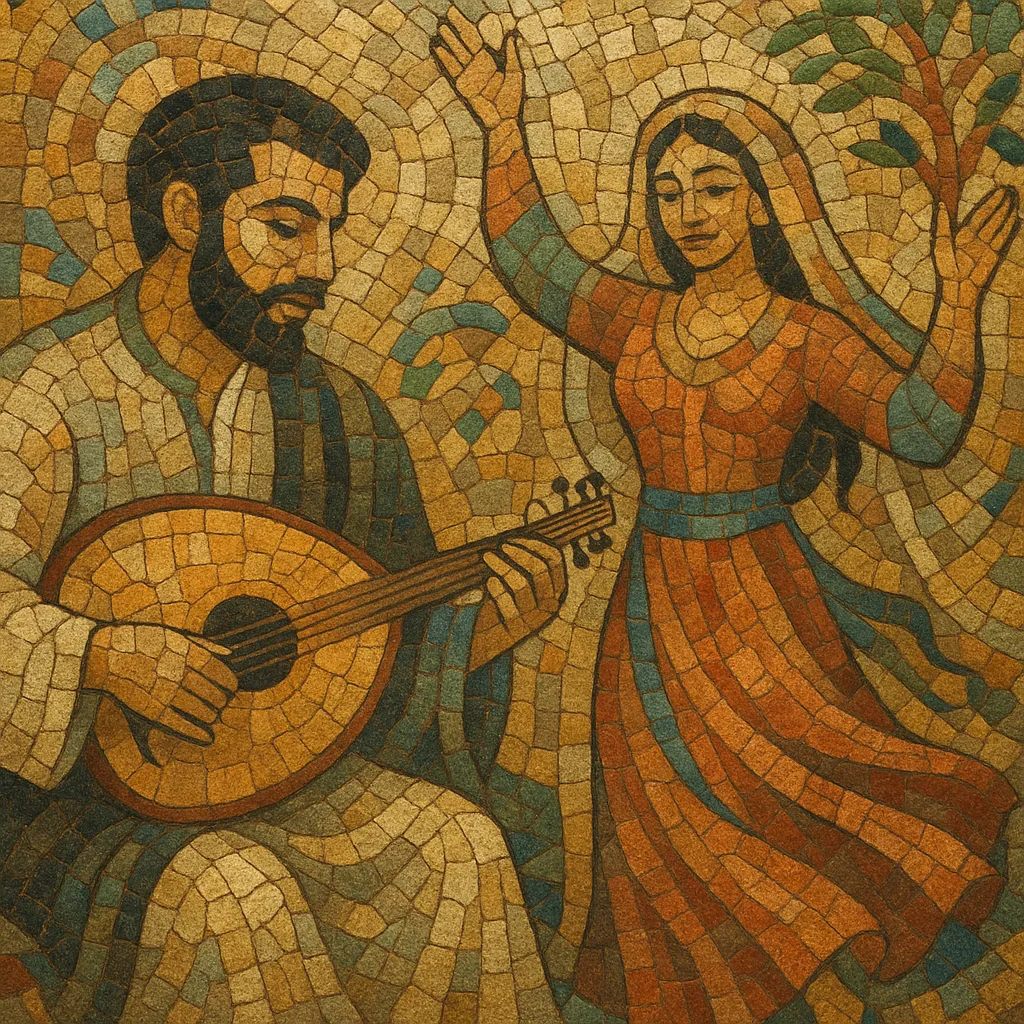Mūsīqā lubnāniyya (Lebanese music) denotes the modern popular and art-music traditions that emerged in Lebanon, blending Levantine folk idioms, Arabic maqam-based composition, and Western pop/jazz orchestration.
It is characterized by melodic lines rich in ornamentation and microtonal inflections, buoyant dabke rhythms for dance repertoire, and poetic lyrics in Lebanese Arabic that range from romantic to patriotic and nostalgic themes. In the second half of the 20th century, Beirut’s studios, composers, and star singers shaped a distinctive sound—at once rooted in regional modalities and open to European chanson, classical orchestration, and jazz harmony.
Lebanese music draws on Levantine folk song, urban tarab practice, Syriac/Byzantine liturgical chant, and Ottoman-era classical traditions. Instruments such as the oud, buzuq, qanun, and mijwiz, and poetic song forms like the mawwāl and layālī prepared the ground for a distinctly Lebanese voice.
From the 1950s, radio, festivals, and theater in Beirut enabled a new synthesis. The Rahbani Brothers composed operettas and song suites for Fairuz, shaping a luminous orchestral sound that fused dabke rhythms, folk refrains (e.g., ‘al-dal‘ōna’), and European harmonization. In parallel, stars like Wadih El Safi and Sabah popularized a rural–urban continuum of styles, while arrangers incorporated elements from Egyptian studio pop, French chanson, and Western classical strings.
Civil war disrupted the local industry yet catalyzed diaspora networks and studio ingenuity. Ziad Rahbani advanced a jazz-inflected, theatrical songcraft; protest and nostalgic repertoire grew. With the 1990s peace and satellite TV, a video-driven pan-Arab pop economy emerged. Lebanese producers, labels, and TV shows helped launch and export a polished pop aesthetic across the Arab world.
Internationalized production (dance-pop beats, R&B textures, and EDM polish) met persistent roots (dabke party songs, buzuq/mijwiz riffs). Artists balanced colloquial lyricism, romantic ballads, and national themes. Meanwhile, indie and jazz scenes in Beirut spurred crossovers with electronics and experimental music, while folk troupes kept dabke-based repertoire vibrant.


